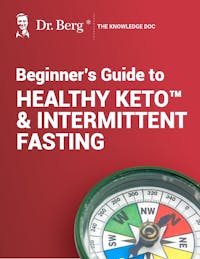Is Seed Oil Worse than Sugar? - Seed Oil vs. Sugar

How to Read Your Body
Learn to recognize common symptoms and uncover their underlying health issues
Understand the signs of nutrient deficiencies to manage your health
Explore the four metabolic body types and the core factors that influence them
Interpret your body's signals from head to toe to identify potential health concerns

How to Read Your Body
Learn to recognize common symptoms and uncover their underlying health issues
Understand the signs of nutrient deficiencies to manage your health
Explore the four metabolic body types and the core factors that influence them
Interpret your body's signals from head to toe to identify potential health concerns

How to Read Your Body
Learn to recognize common symptoms and uncover their underlying health issues
Understand the signs of nutrient deficiencies to manage your health
Explore the four metabolic body types and the core factors that influence them
Interpret your body's signals from head to toe to identify potential health concerns

How to Read Your Body
Learn to recognize common symptoms and uncover their underlying health issues
Understand the signs of nutrient deficiencies to manage your health
Explore the four metabolic body types and the core factors that influence them
Interpret your body's signals from head to toe to identify potential health concerns

How to Read Your Body
Learn to recognize common symptoms and uncover their underlying health issues
Understand the signs of nutrient deficiencies to manage your health
Explore the four metabolic body types and the core factors that influence them
Interpret your body's signals from head to toe to identify potential health concerns

How to Read Your Body
Learn to recognize common symptoms and uncover their underlying health issues
Understand the signs of nutrient deficiencies to manage your health
Explore the four metabolic body types and the core factors that influence them
Interpret your body's signals from head to toe to identify potential health concerns

How to Read Your Body
Learn to recognize common symptoms and uncover their underlying health issues
Understand the signs of nutrient deficiencies to manage your health
Explore the four metabolic body types and the core factors that influence them
Interpret your body's signals from head to toe to identify potential health concerns

How to Read Your Body
Learn to recognize common symptoms and uncover their underlying health issues
Understand the signs of nutrient deficiencies to manage your health
Explore the four metabolic body types and the core factors that influence them
Interpret your body's signals from head to toe to identify potential health concerns

How to Read Your Body
Learn to recognize common symptoms and uncover their underlying health issues
Understand the signs of nutrient deficiencies to manage your health
Explore the four metabolic body types and the core factors that influence them
Interpret your body's signals from head to toe to identify potential health concerns

Beginner’s Guide to Healthy Keto & Intermittent Fasting
Receive a step-by-step guide to starting Healthy Keto® and intermittent fasting
Learn about foundational principles and best practices for beginners
Get detailed visual guidance on portion sizes and meal composition
Discover how to set achievable goals and monitor your progress
Find practical tips for overcoming common challenges and staying motivated

Beginner’s Guide to Healthy Keto & Intermittent Fasting
Receive a step-by-step guide to starting Healthy Keto® and intermittent fasting
Learn about foundational principles and best practices for beginners
Get detailed visual guidance on portion sizes and meal composition
Discover how to set achievable goals and monitor your progress
Find practical tips for overcoming common challenges and staying motivated

Beginner’s Guide to Healthy Keto & Intermittent Fasting
Receive a step-by-step guide to starting Healthy Keto® and intermittent fasting
Learn about foundational principles and best practices for beginners
Get detailed visual guidance on portion sizes and meal composition
Discover how to set achievable goals and monitor your progress
Find practical tips for overcoming common challenges and staying motivated

Beginner’s Guide to Healthy Keto & Intermittent Fasting
Receive a step-by-step guide to starting Healthy Keto® and intermittent fasting
Learn about foundational principles and best practices for beginners
Get detailed visual guidance on portion sizes and meal composition
Discover how to set achievable goals and monitor your progress
Find practical tips for overcoming common challenges and staying motivated

Beginner’s Guide to Healthy Keto & Intermittent Fasting
Receive a step-by-step guide to starting Healthy Keto® and intermittent fasting
Learn about foundational principles and best practices for beginners
Get detailed visual guidance on portion sizes and meal composition
Discover how to set achievable goals and monitor your progress
Find practical tips for overcoming common challenges and staying motivated

Beginner’s Guide to Healthy Keto & Intermittent Fasting
Receive a step-by-step guide to starting Healthy Keto® and intermittent fasting
Learn about foundational principles and best practices for beginners
Get detailed visual guidance on portion sizes and meal composition
Discover how to set achievable goals and monitor your progress
Find practical tips for overcoming common challenges and staying motivated

Beginner’s Guide to Healthy Keto & Intermittent Fasting
Receive a step-by-step guide to starting Healthy Keto® and intermittent fasting
Learn about foundational principles and best practices for beginners
Get detailed visual guidance on portion sizes and meal composition
Discover how to set achievable goals and monitor your progress
Find practical tips for overcoming common challenges and staying motivated

Beginner’s Guide to Healthy Keto & Intermittent Fasting
Receive a step-by-step guide to starting Healthy Keto® and intermittent fasting
Learn about foundational principles and best practices for beginners
Get detailed visual guidance on portion sizes and meal composition
Discover how to set achievable goals and monitor your progress
Find practical tips for overcoming common challenges and staying motivated

Beginner’s Guide to Healthy Keto & Intermittent Fasting
Receive a step-by-step guide to starting Healthy Keto® and intermittent fasting
Learn about foundational principles and best practices for beginners
Get detailed visual guidance on portion sizes and meal composition
Discover how to set achievable goals and monitor your progress
Find practical tips for overcoming common challenges and staying motivated
Is Seed Oil Worse than Sugar? - Seed Oil vs. Sugar
Walking into a grocery store, you're bombarded with choices that affect your health in ways more complex than we once thought.
Now, we're venturing into the fiery discourse surrounding whether omega-6 seed oils are more detrimental to our well-being than sugar, which stirs much controversy.
This topic isn't just another drop in the ocean of nutrition advice; it's a tsunami reshaping how we view what's on our plates.
Unraveling the mystery of omega-6 and omega-3 fatty acid equilibrium unveils its paramount significance for our health prosperity. Our focus will be diving into the duration these lipids reside within us and their effects compared to how sugar depletes vital nutrients.
Grasping these nuances empowers you to choose nourishments that elevate your health to its potential.
So, let’s peel back the layers on this intricate subject and see where science leads us.
The Omega-6 and Omega-3 Ratio: A Critical Health Indicator
Imagine your body as a high-performance vehicle. Just like that car needs the right oil balance to run smoothly, your body requires a balanced ratio of omega-6 to omega-3 fatty acids for optimal health.
But here's the kicker: most people are fueling up on the way too much omega-6, throwing their systems out of whack.
Understanding the Ideal Ratio
In an ideal world, our diets would give us an omega-6 to omega-3 ratio between 1-to-1 and 4-to-1. Why does this matter? Getting this balance right plays a huge role in controlling inflammation, supporting heart health, and ensuring our brains work their best.
The trouble is, with today's standard American diet loaded with processed foods and vegetable oils rich in omega-6s, we're seeing ratios more like 15-to-1 or higher.
This disproportionate balance is far from a trivial issue; it's intricately connected to the prevalence of chronic illnesses like cardiovascular disease, malignancies, and autoimmune disorders.
And let me tell you from firsthand experience—that shifting that balance back towards equilibrium can make a monumental difference in how you feel daily.
Consequences of Imbalance
A high intake of these inflammatory omega-6 seed oils doesn’t just stop at inflammation—it’s also been shown to contribute significantly to obesity rates soaring sky-high.
Our cells become congested with these fats, leading them toward insulin resistance—one step closer to diabetes territory. Think about it: when did someone say they felt better after loading up on junk food? That is precisely my point.
And while sugar often gets all the glory (or rather, infamy) for its role in deteriorating health, excessive consumption might not hold a candle against damages wrought by the unchecked influxes of Omega-6 fats lurking in many “healthy” labels.
The Prolonged Presence of Omega-6 Seed Oils in Our Bodies
Omega-6 seed oils are like uninvited guests at a party, hanging around much longer than you'd want. Once in your body, they can stick around for up to 600 days. That's nearly two years.
Simply knowing this ought to have us reevaluating our daily dietary choices with a keen eye.
Why does this matter? These oils accumulate in our tissues and are linked to various health issues. The idea isn't to scare you but rather to inform you so that you can make better choices moving forward.
Key Stats: Omega-6 seed oils accumulate in the body's tissues for up to 600 days.
The accumulation is not just a number; it represents how persistent these fats are within us. Imagine eating something today and still having traces of it in your system over a year later.
This study on dietary fats provides an eye-opening look into how long these omega-6 fatty acids linger compared to others.
This prolonged presence could be why certain inflammatory conditions persist or worsen over time. It’s akin to continuously adding fuel to a fire instead of extinguishing it.
Making conscious decisions about what we eat has never been more critical. Reducing the intake of processed foods rich in omega-6 seed oils might be one critical step towards better health and well-being.
Indeed, who's keen on having unwelcome visitors sticking around longer than they should?

Sugar Consumption and Its Nutrient Depletion Effect
When we talk about sugar, it's not just a matter of calories. The real issue runs deeper, affecting our bodies' nutrients to function optimally. Excess sugar can significantly deplete essential nutrients like B1, calcium, magnesium, zinc, and vitamin C.
This nutrient drain happens because processing sugar requires these vitamins and minerals from our stores to metabolize correctly. It's like running a factory that only produces waste without any beneficial output.
However, there’s a silver lining when fruits come into play. Even though they're sweet, fruits are loaded with vitamins and phytonutrients that combat the drawbacks of processed sugars.
Understanding this balance is crucial for maintaining good health and highlights why all sugars are not created equal, according to Harvard Health.
The Impact of Diet on Omega Fatty Acid Ratios
What you feed animals isn't just farm talk; it's crucial for your health, too. When livestock munch on grains, they're not just getting full—they're packing their meat with a skewed ratio of omega-6 to omega-3 fatty acids.
This imbalance doesn't stop at the barn door; it gallops onto your plate.
But there's a silver lining in this cloudy steak sky—grass-fed and pasture-raised products. These options boast a more favorable balance between these essential fats than their grain-fed counterparts. It turns out that what’s good for the cow is even better for you.
If flipping burgers has got you thinking about flipping your fatty acid intake, consider reaching for grass-fed beef next time.
Incorporating grass-fed meat into your diet could lead to your system singing praises due to enhanced abilities in battling inflammation and bolstering cardiac wellness.
Oxidation and Inflammation from Omega-6
Omega-6 seed oils, often found in processed foods, can kickstart a chain reaction of oxidation and inflammation. This process begins when these oils oxidize LDL cholesterol, like rust forming on metal.
After undergoing oxidation, LDL transitions into a more dangerous state, thereby laying the groundwork for potential heart-related complications.
The link between omega-6 seed oils and inflammation is not just speculative; it's well-documented. Consuming these lipids fosters a setting ripe for inflammation, potentially opening the door to persistent ailments unless managed.
To understand this better, exploring how dietary fats influence heart health offers deep insights into their impact.
Mitigating these effects involves balancing our intake of omega-6 with omega-3 fatty acids—fats known for their anti-inflammatory properties.
Achieving this balance isn't just about cutting back on certain oils but embracing whole food sources rich in omega-3s like fish or flaxseeds.

The Protective Role of Phytonutrients Against Omega-6 Effects
Omega-6 fatty acids, found in abundance in seed oils like soybean and corn oil, have been vilified for their potential to tip the scales toward inflammation when not balanced with omega-3s.
But here's a twist: not all foods high in omega-6 are villains waiting to clog your arteries. Some come packed with an army of phytonutrients ready to defend your health.
Nuts are a prime example. Even though nuts have a lot of omega-6, they're also loaded with unique phytonutrients that help counteract the potential downsides of these fats.
It’s like having a built-in safety mechanism that ensures you get the benefits without as many risks.
These protective compounds do more than stand guard against the adverse effects of too much omega-6; they promote heart health, reduce inflammation, and even protect against certain types of cancer.
So next time you hear someone cautioning against foods rich in omega-6s, remember it's not just about the fat itself but what comes with it. Harvard School of Public Health provides insights into how balancing different types of fats is crucial for optimal health.
In essence, while we've been busy demonizing certain fats or glorifying others based on simplified narratives around nutrition science, recent studies suggest that nature often packages nutrients together in ways that naturally balance out their effects on our bodies.
Thus highlighting the importance of whole foods over processed alternatives whenever possible.
Conclusion
Balancing omega-6 and omega-3 is vital for your health. We've seen how an imbalance can tip the scales against us.
Omega-6 seed oils linger, but so do their effects. Sugar strips away nutrients, yet it's all about context.
Isn't the real puzzle here whether omega-6 seed oils outdo sugar in their impact but how we strike a balance within our diets?
Remember, choosing grass-fed over grain-fed makes a difference. And while fats stir debate, sugars aren’t off the hook either.
Making informed choices starts with understanding these nuances. Let this knowledge guide you towards a balanced diet that supports your well-being.
Tags

Popular
08/21/2024
55.7K views
02/23/2025
46.8K views
11/18/2024
281.1K views
03/18/2024
11/21/2022




